The painful symptoms in the lumbar region are concerned about 80% of the planet's population at different stages of life.Often these are manifestations of osteochondicism.Doctors declare the fact - the disease is no longer the destiny of the elderly.Increasingly, the symptoms of the disease occur in people who have not reached the age of 30 years.Without treatment, the osteochondria leads to the complete immobilization of the lumbar spine and the subsequent disability of the patient.
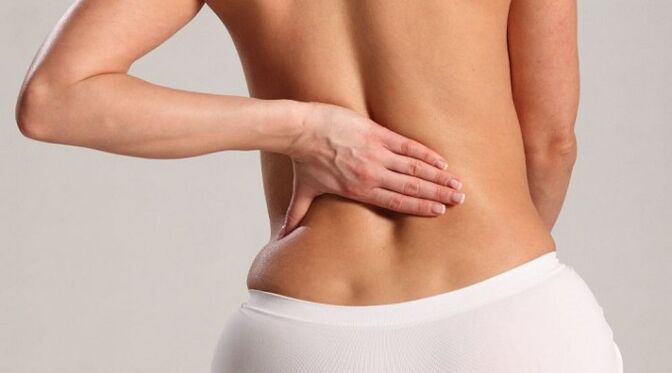
What is the lumbar spine osteochondria
The diagnosis implies the course of degenerative processes in cartilage, consisting of intervertebral joints.Osteochondria in the lower back is characterized by changes in joints and vertebrae precisely in the lumbar region.
Osteochondria is a gradual degeneration of cartilage in the bone.
Often osteochondria ends with the formation of an intervertebral hernia, which is a source of constant lower back pain in the patient.Pop Osteochondrosis creates nerve sting, as well as blood vessels, causing a violation of domestic organs food, which are full of symptoms of functional disorders in the functioning of the body.
The causes of lumbar disease
The spine osteochondria belongs to various diseases, the exact causes of which have not yet been established.It is well known that spine defeat is preceded by metabolic disorders, which can lead to a huge number of adverse factors.The most common examples:
- Acute lack of movement.
- Details of electrolyte metabolism.The intervertebral joint trophy is disturbed due to chronic diseases.
- Relatives or obtained ODA violations.
- Accurate physical activity is the most common reason.
- Wrong lifestyle.Abuse salt, fried, fat, smoked products leads to dystrophic changes in the intervertebral joints.
With osteochondria, back muscles are gradually atrophy, the patient begins to climb.
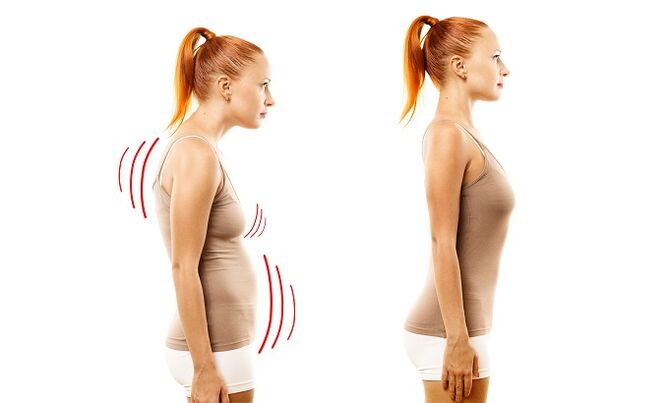
Doctors note a hereditary predisposition to the development of the disease.Also, provocative factors include the lack of treatment for the curvature of the spine - lordosis, scoliosis, bias.
Characteristic symptoms
The signs of lumbar osteochondrialization are characterized by the appearance of various symptoms, as well as the development of three pathological syndromes: root, ischemic, spine.
The symptom of pain may occur:
- Lumbago- Pain lumbar pain.The symptom disappears almost completely when the body is placed in a horizontal position.
- Lumbago- Lightning pain.The symptom is distinguished by radiation ability.
- Sciatica- Lumbar pain that spreads to the buttocks and legs.The symptom is accompanied by the loss of surface sensitivity.
The back on the back is compared to the shock of the current and the patient freezes in the position where there is no pain.
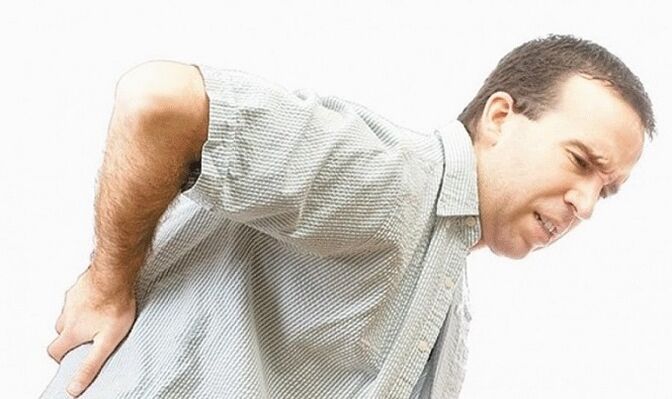
Signs of lumbar osteochondryosis include symptoms of specific syndromes:
- Symptoms of radical syndrome include perforation pain in the area enhanced by a nerve sting.At the same time, there is the focus of painful symptoms in the ends, buttocks, hips and lower abdomen.
- Symptoms of ischemic syndrome are associated with circulation disorders, lack flows into certain nutrient tissues.
- Symptoms of spine syndrome include muscle atrophy, vertebral displacement, a change in the position of the pelvis, which leads to obvious changes in walking and the patient's movement method.
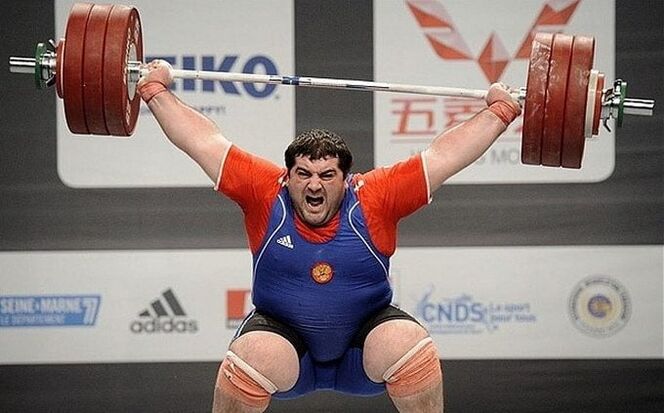
When lifting the severity of the nerve roots and blood vessels they are pressured and the pain in the nerve zone begins to disturb.
Differences from other diseases with marks
Dysfunctional lesions of lumbar spine are accompanied by various symptoms characteristically for this disease:
- Cold cold of the skin of buttocks and hips.
- Reduction of libido, impotence.
- The feeling of gooseberries inside the thigh and buttocks.
- Increased dry skin on the lower back and buttocks, accompanied by peeling.
- Teenager in constipation.
- Urine incontinence.
- A burning sensation in the sanctuary.
Even the complete coincidence of the manifestations of the disease with the described symptoms requires diagnostic studies to confirm the diagnosis (MRI, radiography, computed tomography).
Determination of the stage and the type
The intervertebral osteochondria can be acute and chronic.Very often there is a transition of the disease to a sluggish form, as it is difficult to completely cure the disease.Chronic osteochondria is characterized by the regular appearance of relapses - they complicate the patient's life during the off -season.
Local degenerative changes are quite rare.Often the destruction of the vertebrae of the lumbar region is accompanied by the common osteochondria, which affects various parts of the spine at the same time.The disease is characterized by vastness of pain and obvious disorders of the patient's mobility.
4 points are distinguished by osteochondria:
- Initial changes.The core of the jacket moves into the tray.Symptoms - Shelters may occur in the affected section.
- Damage to the fibrous ring.Multiple cracks are formed in it, there is an increase in vertebrae mobility and the hypertension of the closest muscles.
- Rupture of a fibrous ring.It is accompanied by severe pain of the section, garden formation and radical syndrome.
- Deformation of the spine column.It is accompanied by a shift of the vertebrae, as well as by the development of the bone tissue of the spine, which leads to the patient's immobilization.
The stage of developing the disease is determined by a vertebrate who uses a pulse test and diagnostic measures.
How the lumbar osteochondria is treated
The treatment of lumbar osteochondicity depends on the degree of changes.A prerequisite - timely measures, conducting a test and choosing treatment tactics to prevent the disease from starting.In the later stages of lumbar osteochondroxis, only surgical treatment of the spine (spine) is effective.
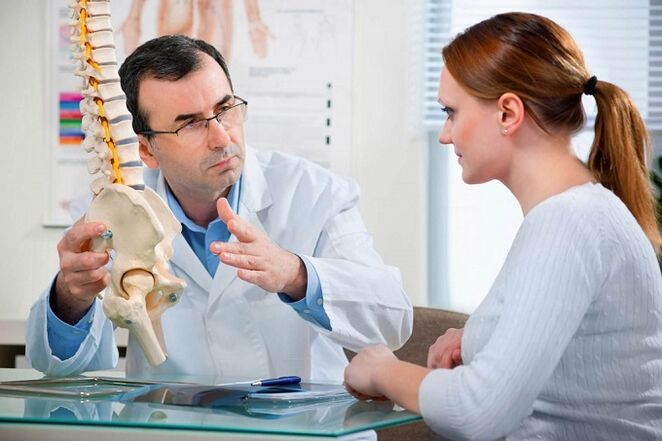
It is very important to consult a doctor for treatment in time, since in the latest stages of osteochondrication, only surgical treatment of the spine is effective.
The treatment of lumbar osteochondricular has the main goals:
- Eliminate the cause of dystrophic processes.
- Removal of the symptoms of the disease.
- Activating the restoration of the intervertebral joints.
- Enhance the muscle device.
To achieve goals, a set of measures, including exercise treatment, physiotherapy, nutrition, drug treatment, massage treatment, is used.An important situation is regularity.Methods for the treatment of osteochondrication may include the determination of the affected back area with corsets.To get rid of osteochondria and prevent recurrence will help kinesiotherapy.
The therapeutic starvation is made in agreement with the doctor.As a rule, compliance with the principles of a healthy diet, the information to a minimum of salt use, as well as the normalization of the consumption regime.
With severe lumbar spine, it may need to comply with the bed status during the first treatment.After eliminating severe pain, the patient should get up, perform basic physical exercises.
With lumbar osteochondria, doctors complement the therapeutic regimen with physiotherapeutic procedures:
- Electrophoresis.
- Magnetotherapy.
- Acupuncture.
- Electrosis.
It is important to observe the regularity of the procedures for osteochondria, as well as to undergo a full course of treatment.
With the osteochondria of the lumbar spine, as well as with other detections of the disease, it is recommended to increase the physical activity by the performing exercises recommended by the orthopedic doctor.
If the strap will help
It is worth choosing a zone for the lower back with osteochondria only with the treating doctor.There are bandages, corsets, hot and neoprene belts that have various indications and contraindications for their application.
Wearing a corset and bandage is one of the main auxiliary methods for restoring joints.The hard zone from the osteochondria determines the lumbar region in a particular position, removes the load from the muscles and joints.A heating zone for osteochondria can be used independently to eliminate pain and prevent the recurrence of the disease.The dog belt protects the lower back from the designs well, relaxes the muscles.
With severe damage, only one doctor chooses the zone for the treatment of osteochondrication.As a rule, these are enhanced hard corsets that provide the stillness of the lumbar and sacred spine.
Massage
With lumbar osteochondria, a course of therapeutic massage is indicated, with the aim of smoothing the food joints of the lower back and achieving muscle in a normal state.Massage must be performed by a specialist.The antagonism for the massage osteochondria is the intervertebral hernia.Manipulations are prohibited to indicate a strong mechanical effect (use of plastic devices and vibration massages).
Gymnasiums
Exercises for the lumbar spine in the context of exercise treatment for osteochondria should choose an orthopedist.General rules for the treatment of physical exercises:
- The dominance of static exercises.
- Lack of sharp movements during execution.
- Moderation of physical activity.
- Methods of saving that exclude vertebrae destruction.
The regularity of physical activity is important.Exercises from osteochondria are included in the morning charge program, which are performed daily.
Pharmaceutical treatment
The duration of the treatment for the lumbar spine, as well as the list of drugs, are determined by the doctor.
In the first days of treatment, they are prescribed:
- Nsaid injections.
- Group Vitamine injections of Vitamins V.
- Injections of coarse protection.
- Relaxing muscle injections.
- External NSAIDs.
After eliminating severe pain and acute inflammation, the patient is transferred to drug forms.The first two weeks continue to face NSAIDs.The use of coarse protection includes prolonged integrated treatment with a combination of internal and external dosage forms.
During the detection of lumbar disease in the early stages, drugs are prescribed by the groups of chondroprotypes.The minimum duration of their reception is 3 months.In the absence of severe painful symptoms, the internal use of NSAIDs is replaced by external painkillers to reduce the negative effect of pharmacological factors on gastric mucosa.
With severe pain, it is excluded - the introduction of analgesics into the affected area of the lower back.
Symptoms of advanced lumbar osteochondicity are able to spoil a person's life.For successful treatment of the disease, you should consult a doctor in the first signs of the disease - pain at the bottom of weak severity.Timely complex treatment can prevent irreversible changes in the lumbar spine.



























